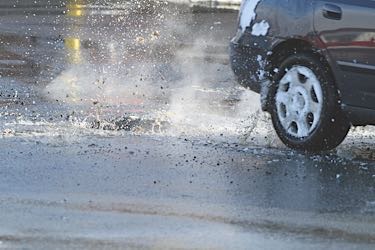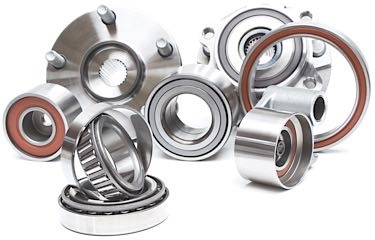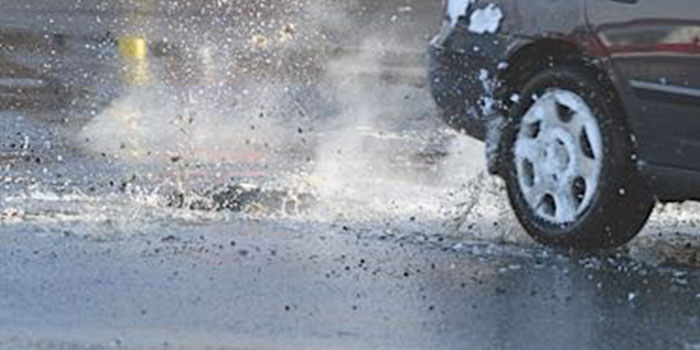 The classic symptom of a bad wheel bearing is typically a cyclic chirping, squealing or growling noise that changes in proportion to vehicle speed. The sound may only appear or disappear at certain speeds. The noise may get worse when turning, or it may disappear momentarily. So, it’s difficult to make a diagnosis based on noise alone.
The classic symptom of a bad wheel bearing is typically a cyclic chirping, squealing or growling noise that changes in proportion to vehicle speed. The sound may only appear or disappear at certain speeds. The noise may get worse when turning, or it may disappear momentarily. So, it’s difficult to make a diagnosis based on noise alone.
A caliper that’s sticking or a brake pad that’s loose and dragging may make a metallic scraping noise as it rubs against the brake rotor. The frequency of the noise will also change in proportion to vehicle speed, but will often go away or change when the brakes are lightly applied.
Noise that only occurs when braking is likely a brake problem, such as worn pads, not a bad wheel bearing.
A popping or clicking noise when turning is a classic symptom of a bad outer CV joint. Also note the condition of the CV joint boot. If torn or leaking, the boot should be replaced regardless of the condition of the joint. If the CV-joint is noisy, it needs to be replaced. A complete axle shaft with new or remanufactured joints on each end is the fastest fix for this kind of problem.
 When a vehicle hits a curb, pothole or other object in its path, the force is transferred to the small surface area of the bearing. The impact may cause damage to the races and the rollers/balls. This damage is called brinelling.
When a vehicle hits a curb, pothole or other object in its path, the force is transferred to the small surface area of the bearing. The impact may cause damage to the races and the rollers/balls. This damage is called brinelling.
Brinelling is a material surface failure/defect caused by contact stress that exceeds the material’s hardness limit. The result is a permanent dent or “brinell” mark.
If a wheel is making noise, the brakes, wheel bearings and CV joint should all be inspected to determine the cause, as all pose a potential safety risk. Any parts that are worn or damaged must be replaced.
Back in the day, Brake & Front End could cover all the bearing specifications and procedures for 90% of the vehicles on the road in just four digest-sized pages. Today, it would take at least two issues.
It is nearly impossible to give a general torque specification for a locking nut torque specification or procedure. There can be large differences depending on bearing type and housing. Also, different vehicles have different vehicle loads on the wheel ends. But, there are some general best practices that technicians should follow.
The first best practice is to always check the service information from the bearing manufacturer or the OEM for the correct procedure.
Over- or under-torqueing a bearing is a common error that can lead to premature failure. Also, the some bearings can be damaged by a procedure that may work for another vehicle.
The most neglected components during bearing repair are the stub axles and splines. This area serves many functions. It connects the transmission to the wheel end and is responsible for transmitting power to the road. Also, the inner and outer flanges transmit the load on the bearing and pre-load the bearing. The flanges of the stub axle have about the same surface area as a business card, but the carry a lot of the load. Any imperfections will change how the bearing performs. Replacement flanges and stub axles are available.
Clean and inspect the axle shaft prior to installing a new hub assembly. Use a fine file, wire brush, emery cloth or honing stone as appropriate to remove any debris, nicks or burrs. Don’t use any lubricants on the threads or washers. This can change the torque readings.
Don’t reuse the old hub nut on the axle if possible. Install a new one and torque to bearing or OEM specifications. These nuts are specifically engineered to not to loosen over time. Some use metal fingers or bands designed to deform and grip the axle shaft.
While impact wrenches can make the job easier, they could cause damage to more than just the bearing. If you are using an impact wrench to remove the axle nut, you can damage the needle bearings on CV joints. While an impact wrench may not seem as powerful as the engine, if the suspension is at full droop, the angles of the joint could damage some of the delicate needle bearings. Also, the rattling caused by an impact wrench is not good for the differential.
In a perfect world, wheel bearings would outlast the vehicle. But, rarely does a bearing just wear out due to the wheel spinning. When a bearing needs to be replaced, it is usually a case of inadequate lubrication where the seal failed or an impact wrench damaged the bearing surfaces.
Courtesy Brake & Front End.














